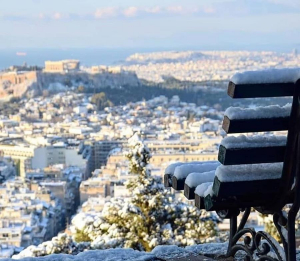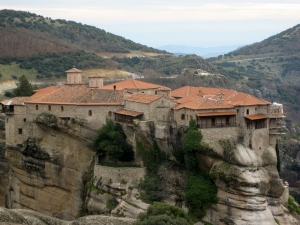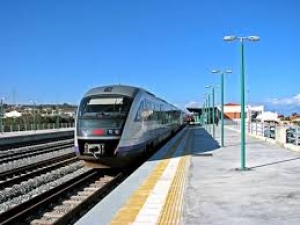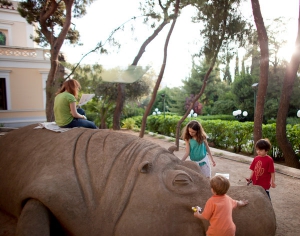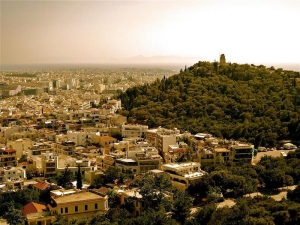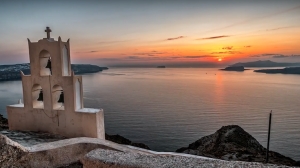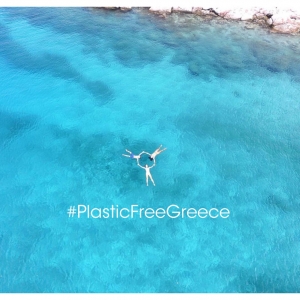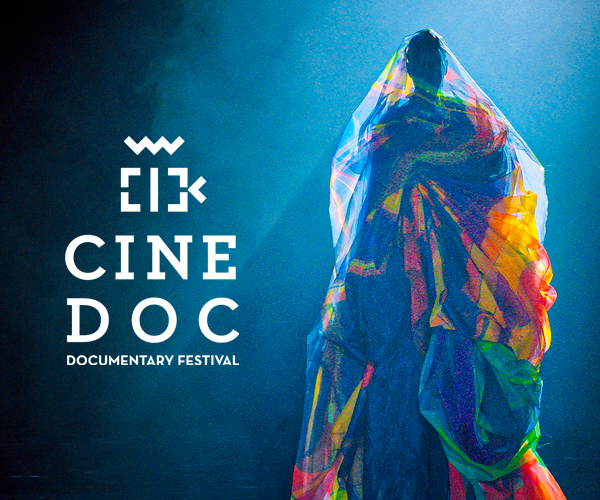XpatAthens
January 8 - Winter In Athens
Even Lockdown Is Better In Athens
Some call them digital nomads. To others, they are corona refugees or lockdown migrants. In this new era where remote-working is king, Athens has become one of the hottest tickets in Europe to ride out the epidemic and hit reset on your life.
Since we first reported on this emerging trend last summer, Greece’s comparatively manageable infection rates and decisive health protocols have kept this new breed of long-haul visitor coming. And with alluring new tax incentives for any foreigner willing to move their tax base to Greece for 7 years, we predict it’s just the beginning. As 2021 gets off the blocks, it seems that everyone knows someone who’s recently relocated to Athens in search of a more fulfilling existence and a fresh start.
We asked some second wave “corona nomads” to tell us in their own words how Athens has given them the personal and professional lift they were craving and why life is so much sweeter in the Greek capital. Even in lockdown.
The Acropolis Addict
Mégane Bambagha, 29, French: Freelance Digital Marketing Consultant
I chose Athens because I am a city girl who likes to be at the centre of the action and I have a weird obsession with the Acropolis! Its history and energy are so beautiful to me. Years ago, I had a Greek boyfriend who introduced me to the neighbourhood of Koukaki. I fell in love with not just the Acropolis but the whole area and its vibe.
I moved here at the end of August from Montpelier because I know Athens has wonderful weather all year long. Even when it’s winter, it’s not really winter. Back in Montpelier, where my family and friends are, I lived just five minutes from the sea. Things were more relaxed there, and if I’m honest, they were also a bit boring.
My life in France was a lot more predictable. You wake up, you work and maybe once a week, you have dinner with friends. Here, there is so much more to see and do; places to go out. Things like parenthood don’t slow Athenians down; they keep on living.
The fact is you have everything in Athens: amazing people, a vibrant city and nightlife, the monuments and the beach. Everybody speaks English (thank God, because my Greek isn't up to scratch yet). Greek men are real gentlemen and handsome too!
The daily rhythm of working in Athens was intense at first but I've come to love it. You never know how your day is going to end here! My working schedule has definitely changed. I used to get up at 5am. Now my day rarely starts before 10 and I go to bed much later. I don’t have breakfast anymore; I have coffee. I’ve forgotten the idea of making plans. In Athens, you better be ready to have an open house at the last minute; or meet friends for dinner instead of lunch. Greek people are very creative too when it comes to entertaining themselves: you don’t need a lot of money to do that here. Athens is definitely teaching me to balance my personal and work existence better, and to stop more often to enjoy life.
My main clients are small businesses in France but I have Greek clients too now. That was another reason I picked Athens. A lot of smaller Greek companies haven’t yet jumped on the train of digital marketing which is what I do. Greece is so beautiful but not always advertised as well as it could be. I see Athens as full of possibilities and huge potential. People here are eager to try new things and experiment: an attitude we completely lack back in France.
At the moment, I’m subletting the apartment of a friend in Koukaki (Makrygianni), one street down from the Acropolis Museum. I have a little balcony and if I put myself in just the right position, I can see the Parthenon. When I’m not working, you’ll usually find me climbing up on one of the big rocks on Philopappou Hill; admiring the Acropolis and taking a moment to reflect on life.
I’ve made some great new friends; a mix of locals and expatriates. When lockdown lifts, I can’t wait to go clubbing again. I love the beach clubs like Bolivar in Alimos. Last time I went, I took my laptop and spent the whole day lounging by the sea with friends, doing some work—and then clubbing into the night.
I try to live like an Athenian. The mindset and lifestyle is different from the French. There’s more of a community feel here. You build a little daily routine of visiting your local deli and bakery, the markets. Everything just flows. Even in lockdown, the life in Athens is so amazing that I don’t feel locked in. I feel reborn.
A Family Affair
Keita Yamada, 33, Japanese: Customer Support at global remote work facilitator Doist
One day last year, while I was working in Costa Rica, an overseas colleague and I started talking about which one place we could both move to where we could work together and enjoy a better lifestyle during the pandemic. She’s Italian but her boyfriend is Greek. They chose Athens and relocated in July. My ex-wife and daughter are also Greek, so we agreed that with Covid, it would be better for us all to be in Athens too, near her parents, to have the extra family support. We bought a one-way ticket and moved in September. I’m renting an air bnb in Piraeus within walking distance of Marina Zea, with a typically Athenian view of rooftops—and a bit of the sea too. I have no plans to leave Athens anytime soon. Working for a company that promotes more fulfilling ways to work and live, I’m very grateful for my job, because it really doesn’t matter where I am—or which hours I work.
In Costa Rica, we lived with similar restrictions to Greece, but when we first arrived in Athens, things felt freer and more normal. Our daughter was able to go to daycare again and I went to work each day at Impact Hub (a popular co-working space in Psirri). Compared to Costa Rica, Athens has a good bus and train system. That has really helped me to move around and see the city, and travel to work.
Before the lockdown, one of the things I enjoyed most about my new Athens life was walking around the different neighbourhoods after work and trying out restaurants and bars that I liked the look of. I must have been to the Strange Brew Taproom in Koukaki about 4 times, sampling all their local craft beers! Now, during lockdown, I am working from home, but I can still enjoy a walk around the sea and visit open places like Marina Zea and the Stavros Niarchos Foundation Cultural Centre parklands.
Going to my local laiki down the street to get fresh fish, fruit and vegetables—and pick up a few new Greek words with locals while I’m there—has become my new routine; and I can still get easy access to take-away souvlaki! I also enjoy watching my daughter engage with her Greek identity and the language, and spend quality time with her grandparents.
When lockdown is over, I want to get back to walking around the city; checking out all the great street art, and exploring the ruins. I’m originally from Miyazaki, in south Japan, and also lived in Tokyo for 3 years where it’s far more crowded and busy than Athens. Tourism is much more advanced here than Tokyo. Everything is available in English: signs, menus in restaurants. That’s an important advantage for the Japanese.
Because so many people speak English, compared to other European cities, getting around Athens and getting to know the city is easy. I have found the locals friendly and happy to help, once you ask questions. Any place you go in Athens they take pride in what they do, and explain things in detail. When I went to get my haircut recently, for example, the barber really threw himself into it. I can see that passion in every aspect of Athenian life.
To read more, please visit This is Athens
Whether you've just arrived in town – or have been here for years – Athens always has new secrets to share! This is Athens is the official guide to this captivating city of ancient energies and booming urban culture. Compiled by a team of specialist local writers, This is Athens brings you an authentic and intimate portrait of a living Athens beyond the guidebooks – along with daily curated listings of all the best events and great weekend inspiration all-year round. From must-know neighbourhoods and emerging art hubs, to gourmet hotspots, cool shopping and the buzziest bars, This is Athens will help you to get the most out of living in Athens!
Thank you This is Athens for your contribution as an XpatAthens Partner.
Autumn On Stage: 3 Captivating Theatre Productions In Athens
1. Witness for the Prosecution (Μάρτυρας Κατηγορίας)

- Wednesday: 20:00
- Thursday: 20:00
- Friday: 21:00
- Saturday: 18:00 & 21:00
- Sunday: 18:00

- Thursday: 20:00
- Friday: 21:00
- Saturday: 18:00 & 21:00
- Sunday: 19:30

- Monday: 20:30
- Tuesday: 21:00
Tickets
Meteora: Peculiar Rock Formations Near Kalambaka
Metéora (Greek: Μετέωρα, “suspended in the air”) is an outstanding complex of giant rock formations near the town of Kalambaka, in the district of Thessaly. The rocks rise over 400 metres above Kalambaka and the valley of river Peneus. It is still unclear how these rocks were formed, but it is estimated that this happened approximately 60 million years ago.
The most prevalent theory about their formation is through a big river that brought geological material, such as rocks, stones and minerals, to the region. Continuous weathering by rain, wind, as well as earthquakes, gave them their present shape. It still remains a mystery, though, why such a unique place is not mentioned anywhere in the Greek mythology and why no Greek or foreign historian has written about it.
Between the 10th century and today 30 monasteries of admirable architecture have been built on these natural sandstone rock pillars, but only six of them remain in a good condition and house religious communities nowadays. For centuries, these monasteries were almost inaccessible, and the monks climbed to the top of Metéora, using rope ladders fixed to the rocks with the aid of wooden poles carefully positioned in rock cracks. The supply of the monasteries was done using nets that hauled up food, water and other necessary goods, as well as people. It was only in the beginning of the 20th century that steps were carved into the rock and facilitated the access to the monasteries. During the World War II, the region of Metéora was bombed and many art treasures were stolen.
To read more, please visit hellasholiday.com
By Maria
Delicious Cheese Pie (Tiropita)
I have used two methods here, one with fillo pastry, the other with puff pastry. Try either method, they both taste fantastic!
Ingredients
8 - 10 sheets filo pastry
70 - 90 gms butter, melted
200g feta cheese, crumbled
200g fresh ricotta cheese
2 eggs lightly beaten
ground black pepper
pinch of ground nutmeg
Preparation
With the cheese, you need at least 200g of feta, you can have more feta and less ricotta if you like, especially if the feta is quite mild.
Combine all the filling ingredients in a Mixing Bowl and mix well.
On a board, stack the fillo sheets on top of each other and cut into 3 strips, lengthwise.
Prepare and grease a large baking tray.
Take one strip of filo at a time, using a Pastry Brush carefully brush the melted butter over the pastry, then place 1 or 2 teaspoons of filling on the pastry at one end.
Taking one corner, fold it over diagonally to create a triangle shape. Keep folding it back and forth, diagonally along the strip. You will find the filling has become enclosed in a triangle shaped envelope.
Place the cheese pie on the baking tray with the loose end underneath. Repeat for all other pies.
Brush the tops of the pies with the melted butter.
Bake in the oven for about 20 minutes or until light golden - 180 C, 350 F, gas 4.
Serve warm or at room temperature. Serve as part of a meze with a drink!
Another very simple method is to use puff pastry. (I often use the shop bought frozen sheets of pastry as it is much easier, but you can make your own puff pastry.)
You will need 5 -6 sheets of pastry.
Cut each sheet into 6 portions, place 1 or 2 teaspoons of cheese filling on each piece.
Brush with water around the edges of the pastry, then fold the pastry over the filling to create a bit of a square.
Pinch the sides together and then place on a baking tray.
Brush the pastry with milk and bake as above.
Both versions are delicious and are great to serve as party food.
Bon Appetit - Kali Orexi
Athens To London / London To Athens By Train
You can reach Greece from London either by train to Italy for the ferry to Patras, or by train all the way to Athens across eastern Europe via Vienna and Budapest. Here are the main options:
Option 1, by train to Italy then cruise ferry to Greece...
This is the quickest, cheapest and most comfortable way from London to Greece without flying. It's shown in red on the route map below. It's a wonderful trip and a great alternative to a flight, taking just 48 hours from St Pancras station to stepping ashore in Greece. Take Eurostar from London to Paris, the overnight sleeper from Paris to Bologna, then an air-conditioned train to Bari in southern Italy. Modern cruise ferries sail overnight from Bari to Patras in Greece, for the train to Athens. Why not stop off to see a little of Italy on the way?
Option 2, by train all the way to Athens...
The overland route from London to Greece takes you via Paris, Munich, Vienna, Budapest & Bucharest to Thessaloniki, Larissa & Athens. This route is shown in dark blue on the route map below. Alternatively, you can travel via Brussels & Cologne, and/or via Belgrade - these alternative routes are shown in light blue on the map below. The complete journey from London to Athens takes 3 nights, with safe & comfortable sleeping-cars available for each of the overnight sections. It's an exciting journey with some wonderful scenery on the way, via Transylvania and the mountains of Greece. Feel free to stop off if you like, too.
Option 3, by train to Venice then by cruise ferry...
This is a simpler but longer variation of option 1. You can take the train from London to Venice and a cruise ferry from Venice to Patras in Greece for the train to Athens. This shows you Venice on the way, and it's a simpler train journey as there's a direct sleeper train from Paris to Venice. Ships from Venice to Patras sail either daily or several times each week, depending on the season.
For further information and details please visit: Seat61.com
In Athens, Austerity Makes Contemporary Art Palatable
Iliana Fokianaki, an Athens-based curator and art critic, was considering a move to Paris in 2011 when businesses were shuttering, friends were losing their jobs and thousands took to the streets in protest. But rather than motivate her to head out of the country, this had the opposite effect. She stayed.
“I realized it would be much more useful to have an artistic platform in a city like Athens than another European city,” said Ms. Fokianaki, who in 2013 inaugurated State of Concept, a Greek nonprofit gallery that has a twofold mission to showcase artists through solo exhibitions and provide young graduates with free consultations. “The crisis kind of boosted our energy to do more things, rather than flee the country.”
To read more, please visit: New York Times
PWC Study Says Athens Is A City Of Opportunity
- Tools for a changing world: Education, technology, and global access
- Quality of life: Attaining the good life is anything but a walk in the park
- Economics: Paying the way for progress
The indicators that were strong points for Athens were health, safety, security, sustainability and the natural environment, cost, and city getaway.
Mayor of Athens, Yorgos Kaminis commented, "This study is a very useful tool in the hands of the Municipal Authority and we will use it to implement both immediate and long-term priorities for the city. The city of Athens proposes a new model of development and social cohesion, with emphasis on openness, innovation and the creation of new jobs to stimulate the Greek capital city as an exclusive tourist destination.”
To read this article in full, please visit: Greek News Agenda
To view the PWC study, please click HERE.
UNWTO Features Greece As A 365-Day Destination In Video Competition
To read this article in full, please visit: Greek Travel Pages

